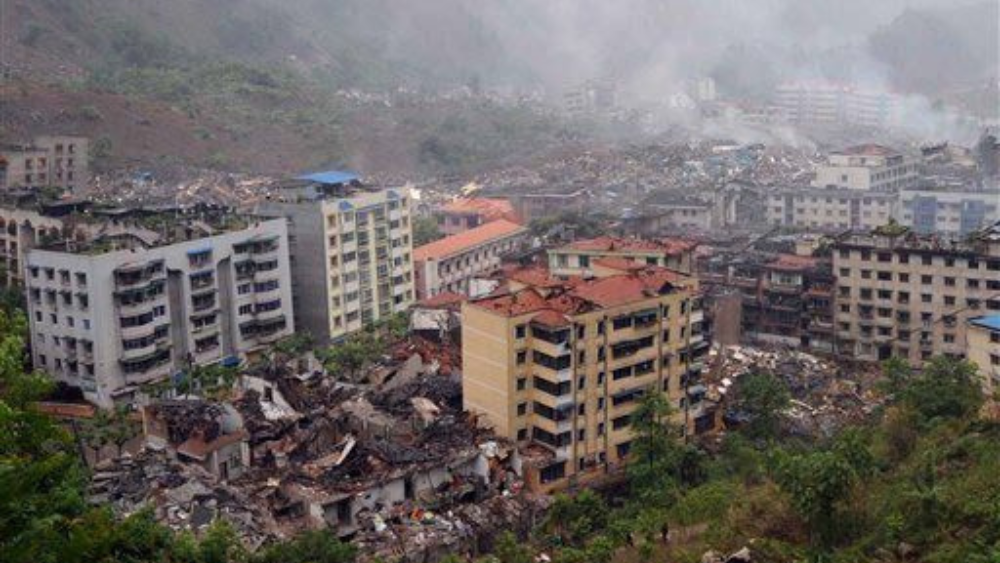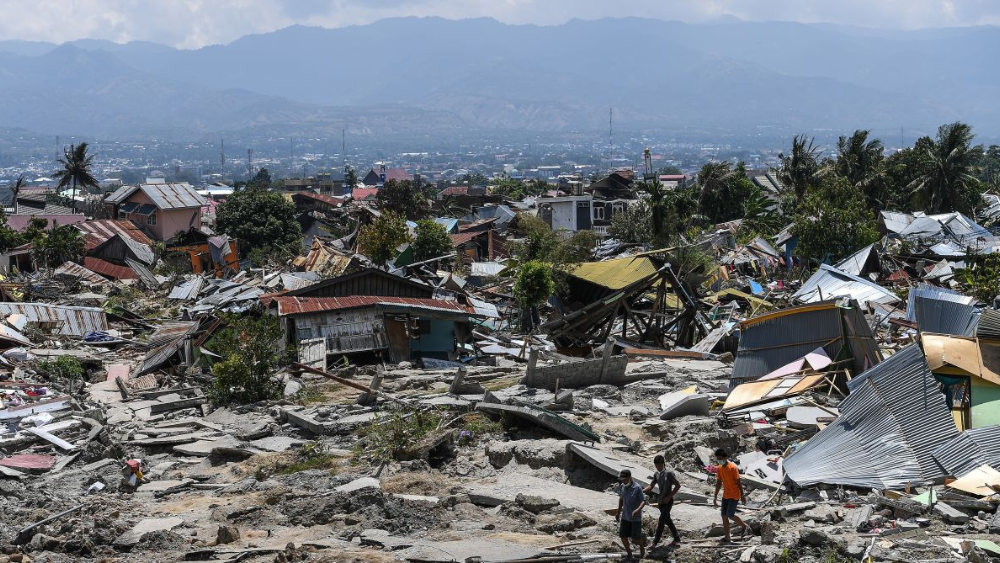Discover the top countries most affected by major earthquakes from 1990 to 2024, and explore India’s position among them.
Table of Contents
Introduction
Earthquakes are among nature’s most formidable forces, capable of causing widespread devastation in mere moments. Certain countries, due to their geographical positioning and tectonic settings, are more susceptible to these seismic events. This article delves into the nations most frequently affected by significant earthquakes and examines India’s standing among them.
Understanding Earthquakes
What Causes Earthquakes?
Earthquakes occur when there’s a sudden release of energy in the Earth’s crust, leading to ground shaking. This release is typically due to the movement of tectonic plates—the massive slabs of rock composing Earth’s surface. When these plates grind against each other or overlap, stress builds up until it’s released as seismic waves.
Measuring Earthquake Magnitude
The magnitude of an earthquake quantifies the energy it releases. Measured on the Richter scale, each whole number increase represents a tenfold increase in measured amplitude and roughly 31.6 times more energy release. For instance, a magnitude 7.0 earthquake releases over 31 times more energy than a 6.0.
Global Hotspots for Earthquakes
The Pacific Ring of Fire
The Pacific Ring of Fire is a horseshoe-shaped zone encircling the Pacific Ocean, characterized by frequent earthquakes and volcanic eruptions. This region accounts for about 75% of the world’s seismic activity. Countries along this ring, including Japan, Indonesia, and the Philippines, experience regular tremors due to active tectonic boundaries.
The Himalayan Region
The collision between the Indian Plate and the Eurasian Plate has given rise to the Himalayas and a seismically active zone stretching across northern India, Nepal, and Tibet. This region is prone to significant earthquakes, some exceeding magnitude 8.0.
Top Countries with the Most Major Earthquakes (1990–2024)
Based on data from the National Oceanic and Atmospheric Administration (NOAA), the following countries have experienced the highest number of major earthquakes between 1990 and early 2024:
| Rank | Country | Number of Major Earthquakes |
|---|---|---|
| 1 | China | 186 |
| 2 | Indonesia | 166 |
| 3 | Iran | 109 |
| 4 | Japan | 98 |
| 5 | United States | 78 |
| 6 | Turkey | 62 |
| 7 | India | 58 |
| 8 | Philippines | 55 |
| 9 | Italy | 23 |
Note: These counts are for earthquakes meeting at least one of the following criteria: damages exceeding $1 million, a death toll of 10 or more, or a magnitude of 7.5 or greater.
China: The Leading Seismic Hotspot
China tops the list with 186 major earthquakes over the specified period. The country’s vast land area and positioning along multiple fault lines, especially near the Tibetan Plateau, contribute to its high seismic activity. Notably, a recent 7.1 magnitude earthquake struck western China near Nepal, resulting in significant casualties.

Indonesia: Archipelago of Tremors
Indonesia, situated along the Pacific Ring of Fire, has experienced 166 major earthquakes. Its location at the convergence of several tectonic plates makes it highly susceptible to seismic events. The 2004 Sumatra earthquake and subsequent tsunami, one of the deadliest natural disasters in history, underscore the region’s vulnerability.

Iran: A Seismically Active Plateau
Iran’s position at the juncture of the Eurasian and Arabian plates results in frequent seismic activity, with 109 major earthquakes recorded. The country has a history of devastating quakes, necessitating robust building codes and disaster preparedness measures.
Japan: An Earthquake-Prone Nation
Japan, with 98 major earthquakes, is renowned for its advanced earthquake preparedness and early warning systems. Despite this, the nation continues to face significant seismic threats, as evidenced by a recent 7.1 magnitude earthquake that prompted tsunami warnings and widespread evacuations.
The United States: Western Seismic Zones
The United States has experienced 78 major earthquakes, primarily along the western coast, including California’s San Andreas Fault. The country’s diverse geological landscape contributes to varying seismic risks across different regions.
Turkey: Crossroads of Continents and Quakes
Turkey’s unique position between the Eurasian and Arabian plates has resulted in 62 major earthquakes. The devastating earthquakes in February 2023, which led to significant loss of life, highlight the ongoing seismic risks in the region.
India: A Nation at Risk
Seismic Zones in India
India ranks seventh globally, with 58 major earthquakes between 1990 and 2024. Approximately 59% of the country’s land area is prone to moderate to severe seismic hazards. The entire Himalayan belt is particularly susceptible to powerful earthquakes, with magnitudes exceeding 8.0.
National Disaster Management Authority
Recent Significant Earthquakes
On January 7, 2025, a 7.1 magnitude earthquake struck near the Nepal-Tibet border, with tremors felt across northern India, including Bihar. This event was the most powerful in the area since the catastrophic 2015 Nepal earthquake, which resulted in approximately 10,000 fatalities.
The Philippines: Pacific Perils
The Philippines, with 55 major earthquakes, is another nation situated along the Pacific Ring of Fire. Its archipelagic nature and tectonic setting make it vulnerable to frequent seismic events and volcanic eruptions.
Italy: Europe’s Seismic Standout
Italy has experienced 23 major earthquakes, making it one of Europe’s most.
Italy has experienced 23 major earthquakes, making it one of Europe’s most seismically active regions, particularly due to its location along the Eurasian Plate. These events emphasize the ongoing need for global preparedness and resilience in the face of nature’s unpredictable forces. While no country can fully escape the risk of earthquakes, understanding seismic activity and investing in mitigation measures remain crucial for minimizing their devastating impact.
FAQ’S
What is the Pacific Ring of Fire?
The Pacific Ring of Fire is a horseshoe-shaped zone encircling the Pacific Ocean, known for frequent earthquakes and volcanic eruptions. It accounts for 75% of the world’s seismic activity.
Why is China the most earthquake-prone country?
China experiences the highest number of major earthquakes due to its vast land area and positioning near multiple tectonic fault lines, including the Tibetan Plateau.
What makes Indonesia so susceptible to earthquakes?
Indonesia is located at the convergence of several tectonic plates in the Pacific Ring of Fire, making it prone to frequent seismic activity and volcanic eruptions.
How does India rank in terms of earthquake frequency?
India ranks seventh globally, with 58 major earthquakes recorded between 1990 and 2024, largely due to its location near the Himalayan collision zone.
What is the significance of the Himalayan region for earthquakes?
The Himalayan region is formed by the collision of the Indian Plate and the Eurasian Plate, making it one of the most seismically active zones in the world.
Which country has the best earthquake preparedness systems?
Japan is renowned for its advanced earthquake preparedness, early warning systems, and stringent building codes, which help minimize damage and loss of life.
What was the deadliest earthquake in recent history?
The 2004 Sumatra earthquake in Indonesia, followed by a devastating tsunami, is considered one of the deadliest, resulting in over 230,000 deaths across multiple countries.
How does the Richter scale measure earthquake magnitude?
The Richter scale measures the energy released by an earthquake. Each whole number increase represents 10 times greater amplitude and about 31.6 times more energy release.
What regions in the United States are most at risk for earthquakes?
The western United States, particularly along the San Andreas Fault in California, is the most seismically active region due to tectonic plate movements.
What are the key strategies for earthquake mitigation?
Key strategies include implementing strict building codes, developing early warning systems, raising public awareness, and ensuring robust disaster preparedness plans.
By watchnewz
